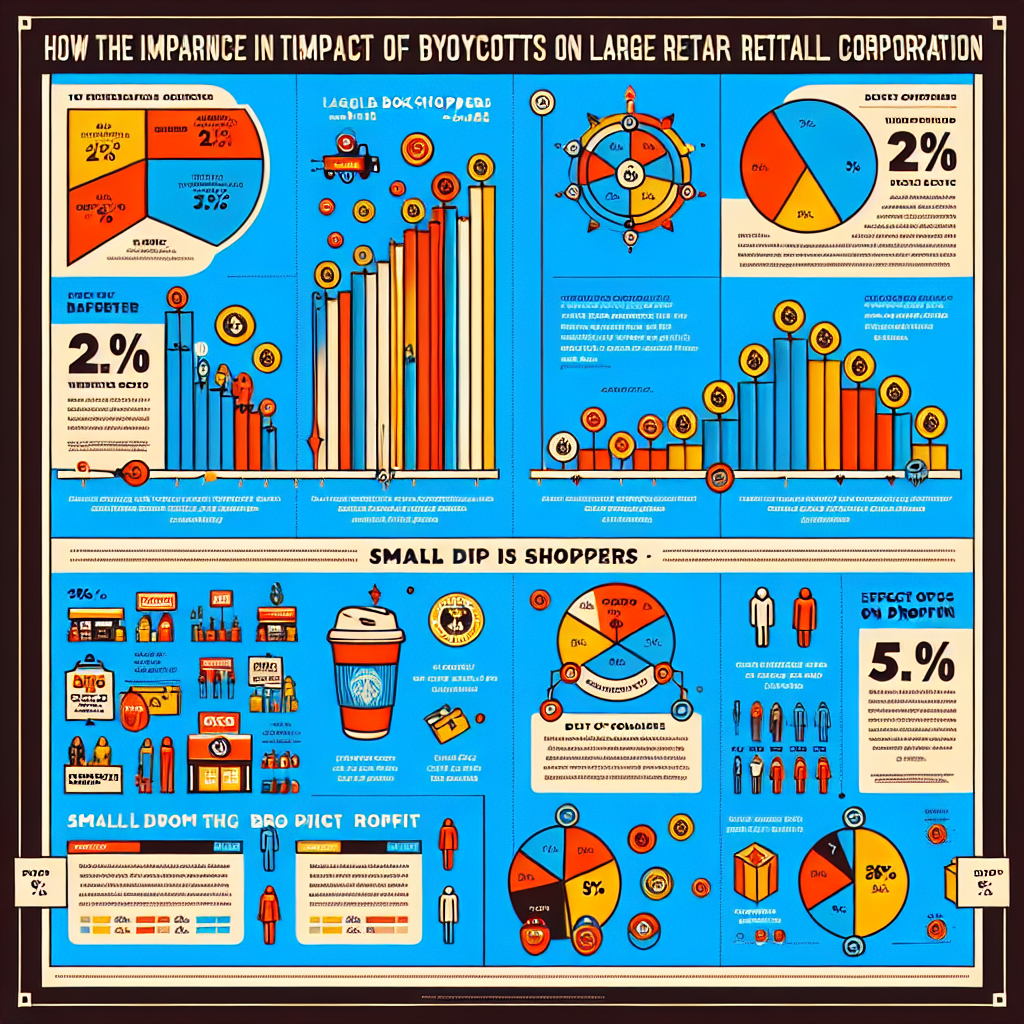
Because most major consumer firms operate on razor-thin net-profit margins (1 – 4 %), losing even 2-5 % of their regular customers can obliterate their earnings and rattle Wall Street. Historic boycott research shows that while the median campaign barely dents sales, the rare actions that cross that low-single-digit threshold—Bud Light in 2023, Target in 2024—trigger double-digit revenue hits and swift concessions. Put simply: organized, sustained defections by just a few million U.S. shoppers can force billion-dollar brands to the bargaining table. MacrotrendsNewsweekAP NewsWikipedia
Why tiny boycotts pack a punch
Thin margins & high fixed costs
- Discount and big-box chains average net margins under 4 %; Walmart’s 2024 margin was 2.9 %. LinkedIn
- With costs largely fixed, a 2 % drop in sales can wipe out 50-100 % of profit, a classic operating-leverage effect. CBS News
Investor & media amplifiers
- A landmark study of 133 boycotts showed a company’s stock price falls ≈ 1 % for each day of national coverage, even when revenue losses are slight. Kellogg School of Management
- Share-price pain raises the cost of capital and pressures boards to negotiate.
Real-world thresholds: how many people is “5 %”?
| Company (latest data) | Weekly/active customers | 2 % of base | 5 % of base | Net margin | Profit erased at… |
|---|---|---|---|---|---|
| Walmart | 240 M weekly shoppers worldwideDemandSage | 4.8 M | 12 M | 2.9 %LinkedIn | ~ 2 % sales dip |
| Amazon (Prime) | 200 M global Prime members (≈ 180 M U.S.)AMZScout | 4 M U.S. | 9 M U.S. | 7.8 %Macrotrends | ~ 8 % dip |
| Target | probably 30 M weekly shoppers (revenue ÷ basket) | 0.6 M | 1.5 M | 3.9 %Macrotrends | ~ 4 % dip |
| Starbucks | 100 M customers per week worldwideCAFELY | 2 M | 5 M | 11 – 12 % (coffee premium) | ~ 11 % dip |
U.S. population 2025: ≈ 341 M.Census.gov Thus, convincing even 1 – 3 % of Americans to sit out a brand can zero its profit.
Case studies that crossed the line
| Campaign | Peak sales hit | Estimated share of customers | Outcome |
|---|---|---|---|
| Bud Light 2023 | − 26 % sales by week 4Wikipedia | ~ 10 % of drinkers | $1 B+ lost revenue, brand fell to #3 in U.S. beer rankings. |
| Target Pride backlash 2024 | − 3 % Q2 sales | ≈ 1 % of shoppers | Cut profit guidance; pulled items, changed display policy. |
| #StopHateForProfit (Facebook ads) | < 1 % July revenue | < 0.5 % advertisers | No policy change; illustrates sub-threshold impact. |
Blueprint: leveraging a 2-5% boycott for real change
1 Pick high-leverage targets
- Focus on firms with low margins and broad customer bases (big-box retail, fast-food, beverage).
- Use publicly traded companies—stock slumps magnify pressure.
2 Set a precise numeric goal
- Example: “Recruit 5 M of Walmart’s 240 M weekly shoppers to pause purchases for 8 weeks.”
- Publish a live counter; milestones energize supporters.
3 Coordinate & sustain media coverage
- King’s study shows each additional news day compounds stock losses. Kellogg School of Management
- Rotate local actions, creative visuals, and whistle-blower leaks to keep headlines fresh.
4 Pre-empt counter-“buy-cotts”
- Provide substitute shopping guides so allies don’t drift to rival big-box stores (which could nullify impact).
5 Link demands to measurable outcomes
- Companies comply faster when they see path-to-resolution (e.g., publish a policy, drop a vendor, meet with community panel).
6 Use investor channels in parallel
- File shareholder resolutions; highlight how boycott threatens earnings (profit-loss math above = board wake-up call).
Estimating your local-impact head-count
Take Walmart as template.
- Weekly customers: 240 M worldwide ≈ 160 M U.S. (71 % usage rate) Yaguara.
- Target: 3 % U.S. shoppers → 4.8 M people.
- If each spends $50/week, revenue hit ≈ $12 B annualized—greater than Walmart’s entire FY-2024 net income. (50 × 52 × 4.8 M = $12.5 B; Walmart NI ≈ $12 B).
This illustrates why even a small but organized slice of consumers can create outsized leverage.
Conclusion
You don’t need half the country to put a Fortune-500 giant on its heels. Detailed studies and recent headlines show that peeling away 2-5 % of a company’s routine buyers—sustained for a few quarters—can erase profits, hammer share prices, and compel policy changes. By setting clear numeric goals, synchronizing media exposure and shareholder pressure, and offering easy substitute options, community organizers can translate modest participation into disproportionate corporate pain—and concrete social wins.
